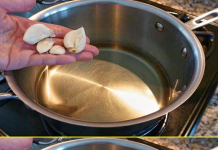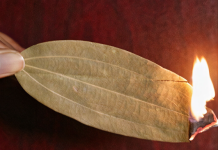Discoloration of the tiles and grout in your bathroom is not only unsightly, but sometimes downright dangerous. Once you’ve determined what type of mold you’re dealing with, you can eliminate it with the right plan of attack.
Question : I just cleaned our rental apartment after the tenant left and discovered black mold in the bathroom. Yuck, how can I remove it?
Answer : Yuck, that’s it! Black mold is disgusting. And depending on what kind it is, it can be dangerous. If the room has been flooded or has recently sprung a long-term leak, what you’re seeing could be black mold: Stachybotrys chartarum. This highly toxic mold should only be removed by a professional.
However, it’s more than likely that a buildup of dirt along your tub or shower tiles indicates a more generic bathroom mold. The only way to be sure is to test, either by having professionals take samples or sending them in with a DIY kit, and wait for the results. Once it is confirmed that it is indeed common mold, you can remove it yourself.
In general, mold is a fungus found in the natural environment and, under the right conditions, indoors. Take the bathroom, for example: its damp, dark and often warm interior makes mold a permanent problem. Without adequate ventilation or routine drying of towels after each use, black mold can easily take hold and thrive. Find out how to remove it here.

- Remove mold and mildew.
Use an antifungal surface cleaner (such as Clorox Antifungal, available on Amazon) and a sponge or cloth to remove mold and mildew from nonporous surfaces, such as tile and porcelain. Then go over stubborn areas with a scrub brush and rinse with plenty of water. This should remove the mildew, even if a dark discoloration remains. - clean the stains.
To remove black stains left by mildew on nonporous surfaces, such as coulis, mix equal parts bleach and water in a spray bottle, spray the stained area and let it act for several minutes. Re-spray the area, then use a scrub brush to remove any remaining discoloration. Tip: You can also use an old toothbrush to get into the narrow lines of the rust. - Remove mold spores.
While bleach is great for removing dark stains caused by mildew, it is not the most effective way to remove mildew spores. Instead, spray the affected area with vinegar and let it dry so the cleaner can remove any remaining mold spores. - Prevent further mold growth.
Keep vinegar on hand. Keep a spray bottle of vinegar in the bathroom and apply it after every shower or bath and let it air dry (you might consider adding several drops of your favorite essential oil – tea tree, peppermint or lavender – to the bottle to make the vinegar smell less offensive).
Reduce humidity. If you don’t have one, install an exhaust fan. Running it every time you shower or bathe, and for a few minutes afterward, will remove residual steam and dry the air.
Clean after each use. Wipe glass doors and tiles with a squeegee and then with a towel to remove extra moisture from these surfaces. While you’re at it, clean sinks after each use, too, so mold and mildew have nowhere to go (and grow).
Clean regularly. Be sure to thoroughly clean the bathroom every week; if all else fails, this consistent regimen should prevent mold spores from taking hold and wreaking havoc. Add an antifungal cleaner to your routine at least once a month.










